
NPS / Jacob Frank The peregrine falcon is among the fastest birds, flying at up to 55 mph and diving at more than 200 mph when striking avian prey in mid-air. Peregrine populations began to decline in the 1940s because of pesticide contamination. One of three North American subspecies, the peregrine in Greater Yellowstone (Falco peregrinus anatum) was considered extirpated by the 1970s. As part of a national reintroduction program, captive-bred peregrines were released in Yellowstone and Grand Teton national parks during the 1980s. They typically reside in Greater Yellowstone from March through October, when their favored prey—songbirds and waterfowl—are most abundant. During winter they migrate as far south as Mexico or farther. HistoryIn 1962, Rachel Carson sounded an alarm about the irresponsible use of pesticides with her landmark book Silent Spring. Among the dangers she described were the adverse effects of chemicals—particularly DDT—on the reproductive capacity of some birds, especially predatory species such as the bald eagle and peregrine falcon. Her book raised public awareness of this issue, and was one of the catalysts leading to the United States banning some of the most damaging pesticides. The peregrine falcon was among the birds most affected by the toxins. It was listed as Endangered in 1970. Yellowstone National Park was a site for peregrine reintroductions in the 1980s, which were discontinued when the peregrine population began increasing following restrictions on organochlorine pesticides in Canada and the United States, habitat protection, and the reintroduction program. The falcon made a comeback in much of its former range, and was delisted in 1999. In Yellowstone, the most nesting pairs recorded was 32 in 2007, and they produced 47 fledglings. Although nesting pairs may reuse the same eyrie for many years, their remote locations on cliff ledges makes it impractical to locate and monitor activity at all eyries in a single year. Yellowstone National Park’s protected conditions and long-term monitoring of peregrines provide baseline information to compare against other populations in the United States. Continued monitoring is essential, not only for comparisons with other populations, but also because peregrine falcons and other raptors are reliable indicators of contaminants such as polybrominated diphenyl ether (PBDE), disease, and climate change. For example, to assess the levels of PBDE and other contaminants, scientists collect eggshell remains after peregrines have left their nests for the season. Recovery in YellowstoneWhile the organochlorines found in peregrine eggshell fragments and feather samples have declined significantly, several studies indicate that certain flame retardant chemicals developed in the 1970s for use in electronic equipment, textiles, paints, and many other products leach into the environment and have been found in birds of prey at levels that impair their reproductive biology. In 2010, 2011, 2013, and 2014 eggshell fragments, feathers, and prey remains were collected from nest sites in Yellowstone after fledging occurred. Comparative data on eggshell thickness, which is an indicator of environmental contaminants, is within the range considered normal for the Rocky Mountain Region. The major cause of peregrine endangerment is no longer a threat and Yellowstone’s peregrine population appears stable. Productivity and nesting success in 2023 was well below the 40-year average of 1.7 and 74% respectively. Relatively low nesting success and productivity over the past decade warrants continued close monitoring of this species and may require further study to determine the cause(s). ResourcesAnnual Bird Program Reports. National Park Service, Yellowstone National Park. http://www.nps.gov/yell/nature/birdreports.htm. Enderson, J.H.,R.J. Oakleaf, R.R. Rogers, J.S. Sumner. 2012. Nesting performance of peregrine falcons in Colorado, Montana, and Wyoming, 2005–2009. The Wilson Journal of Ornithology 124(1):127–132. White, C.M., N.J. Clum, T.J. Cade, and W. Grainger Hunt. Peregrine Falcon. The Birds of North America Online. https://birdsna.org/Species-Account/bna/species/perfal/introduction. 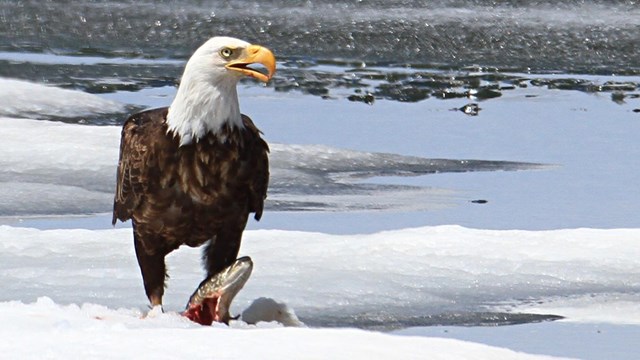
Bald Eagle
Bald eagles can be seen along Yellowstone's many rivers and lakes. 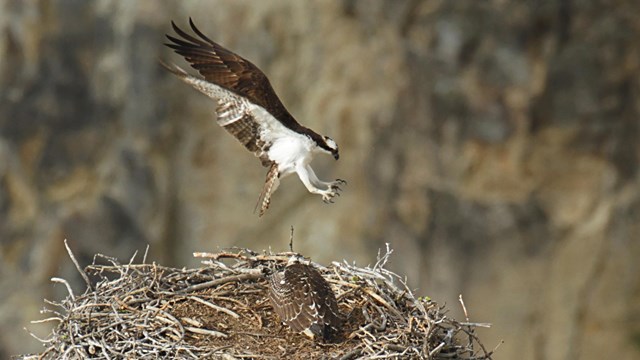
Osprey
Osprey summer in Yellowstone, fishing and raising young. 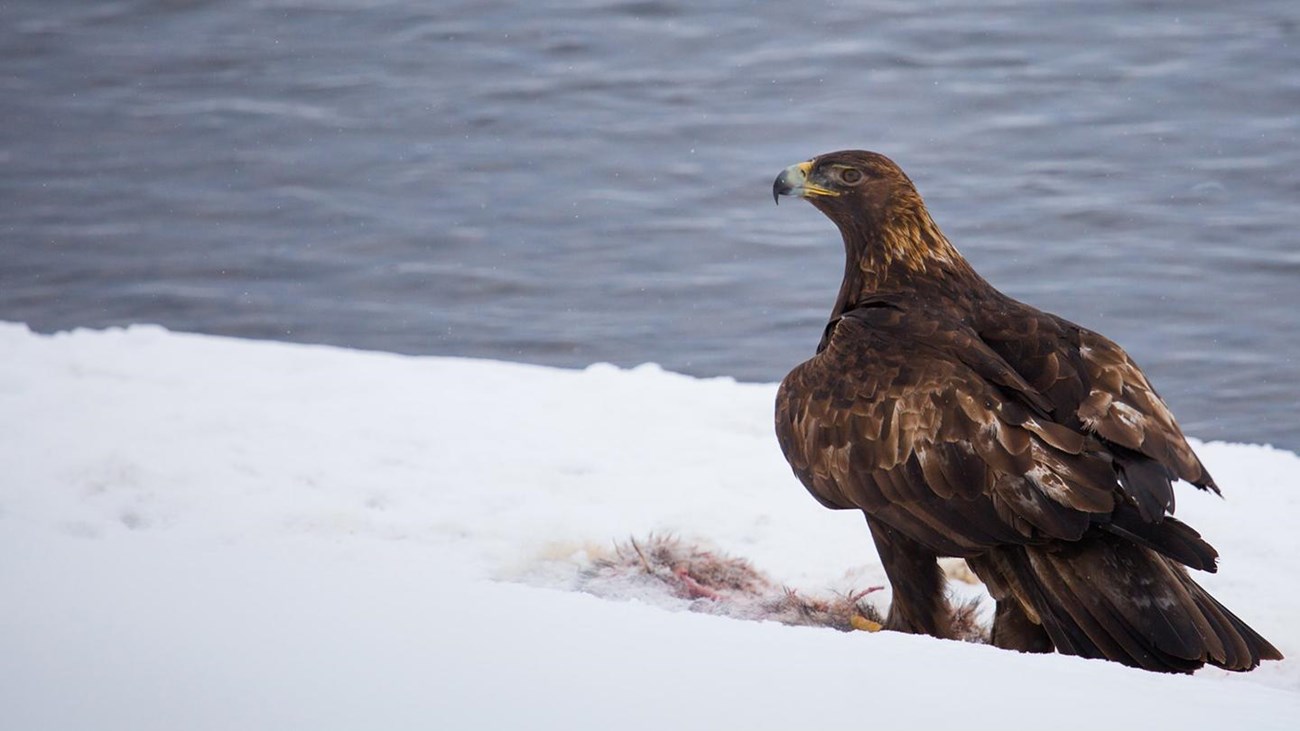
Golden Eagle
Golden eagles are named for the yellow feathers at the base of the neck. 
Colony Nesting Birds
American white pelicans and other colonial nesting birds nest primarily on the Molly Islands in the southeast arm of Yellowstone Lake. 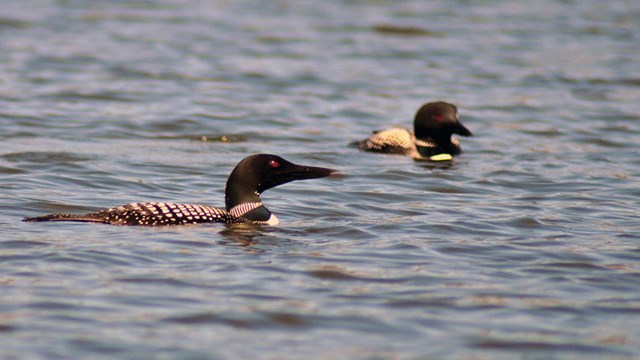
Common Loon
Loons in Yellowstone are some of the southern most breeding populations. 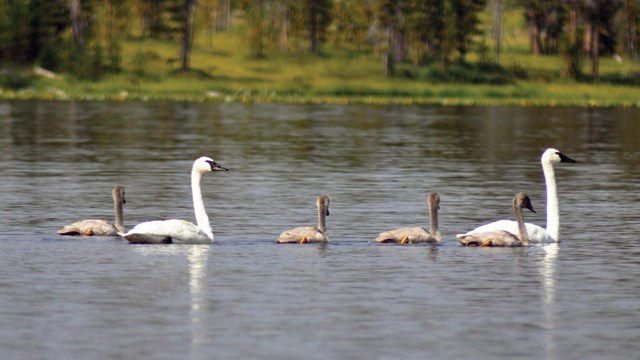
Trumpeter Swan
Trumpeter swans are the largest wild waterfowl in North America. 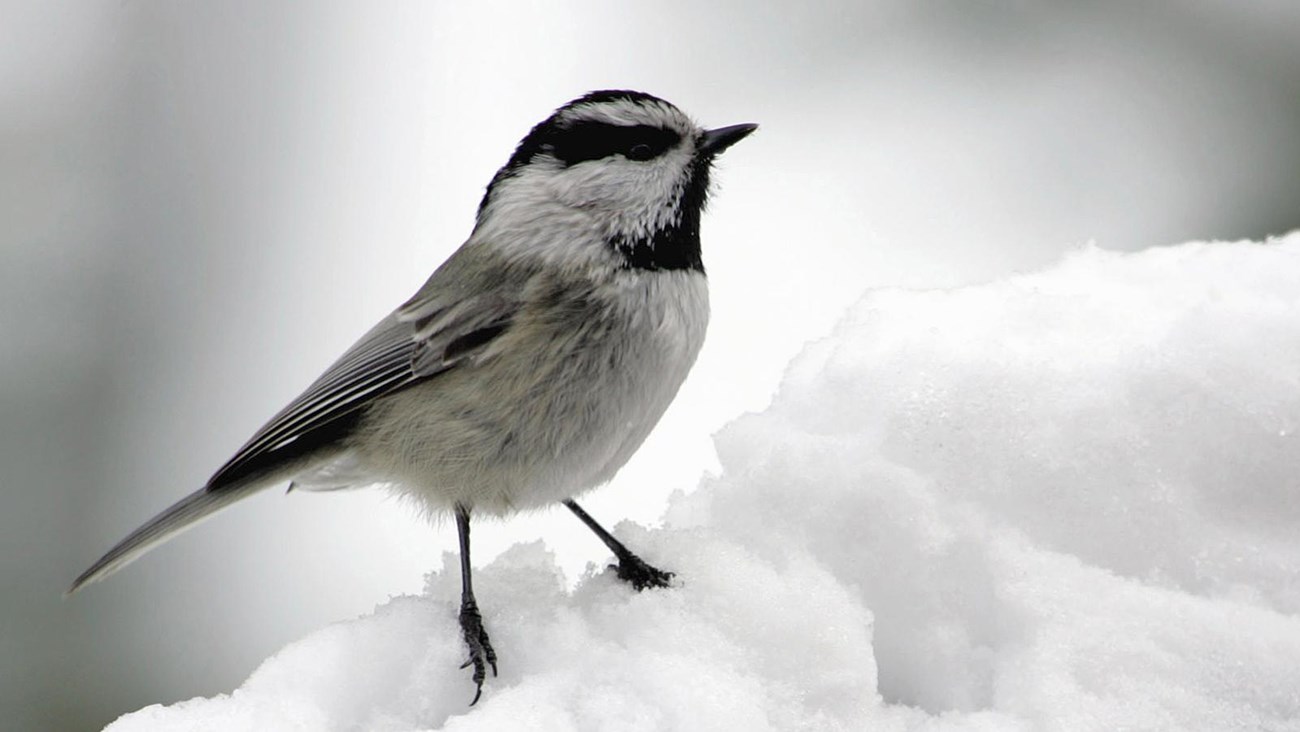
Songbirds and Woodpeckers
Passerine and near passerine species comprise the majority of bird species in Yellowstone. 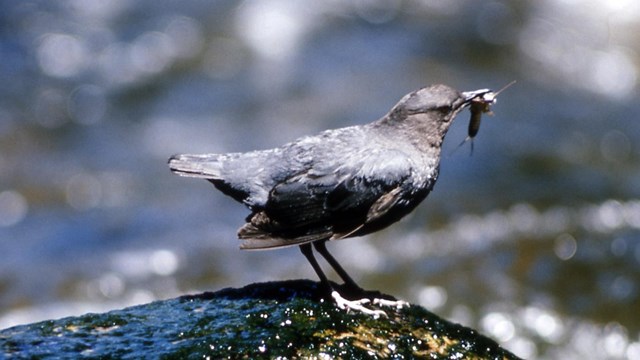
American Dipper
Also known as the water ouzel, these birds dive into water for aquatic insects. 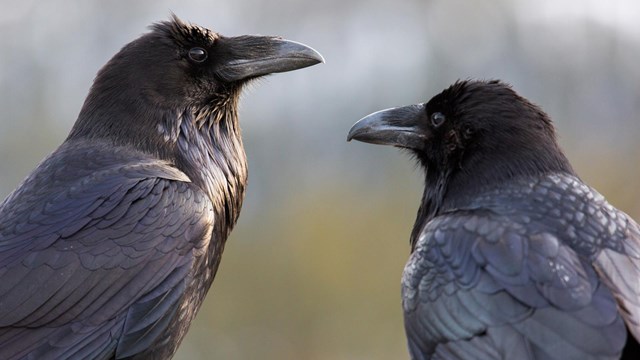
Raven
Ravens are smart birds, able to put together cause and effect. 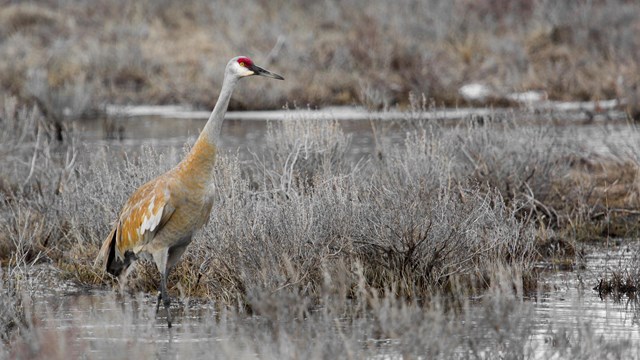
Sandhill Crane
Sandhill cranes nest in Yellowstone during the summer. 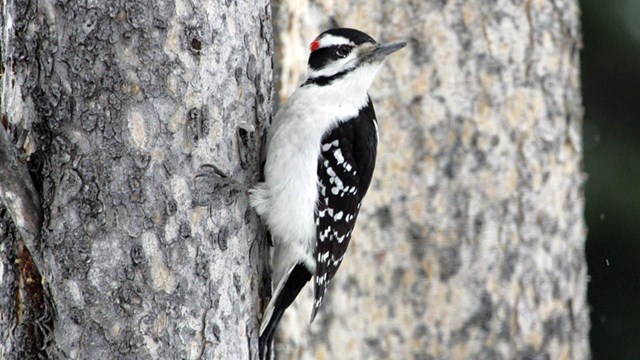
Birds
Spring is a wonderful time to look for birds, as migration brings many birds back to the park. 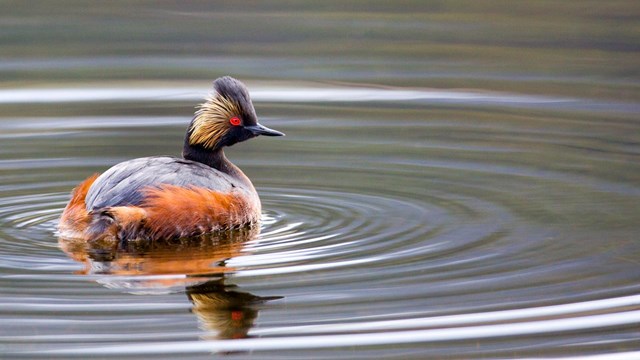
Sound Library
Immerse yourself in the aural splendor of Yellowstone. |
Last updated: April 18, 2025
